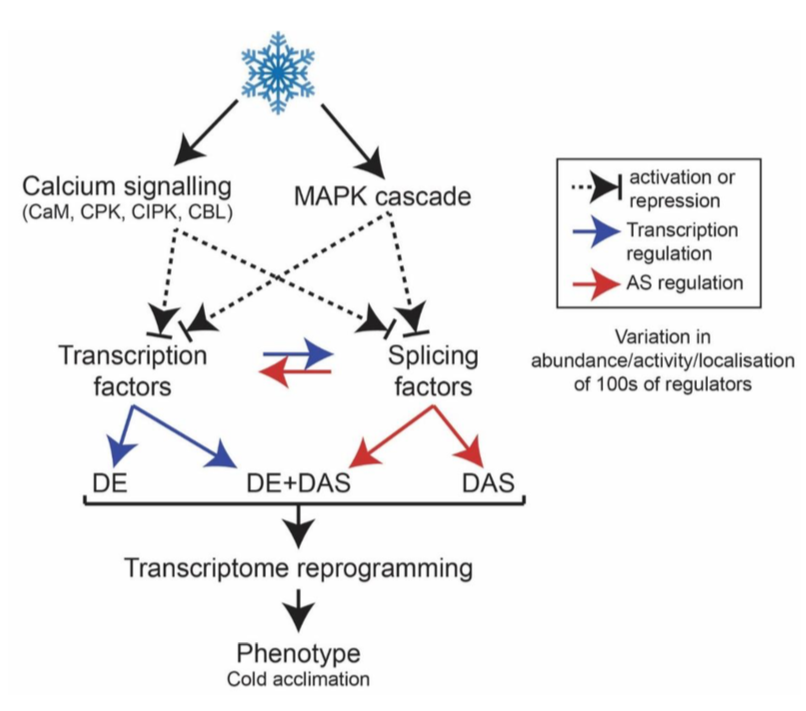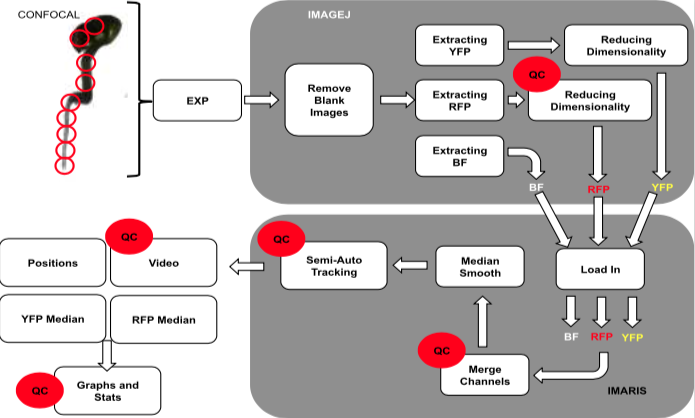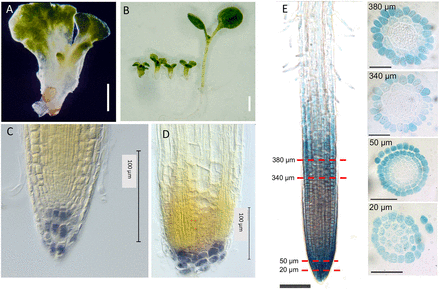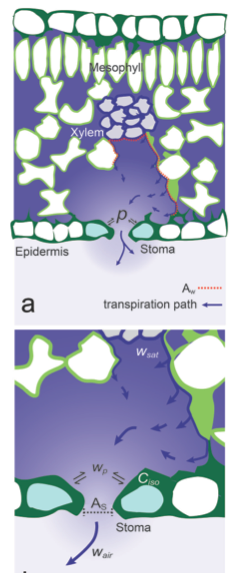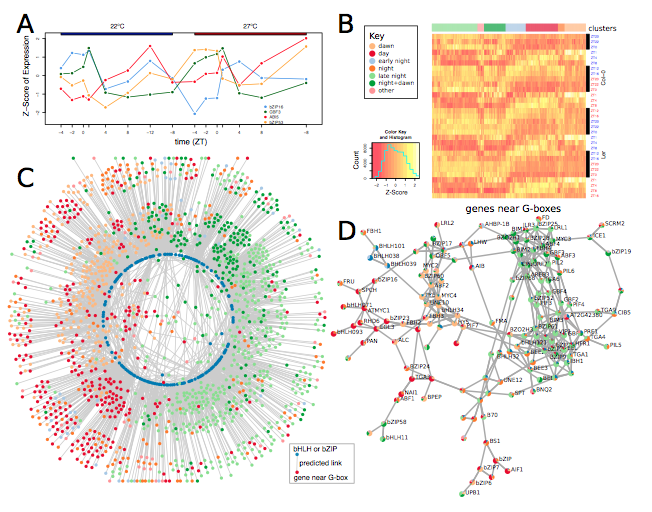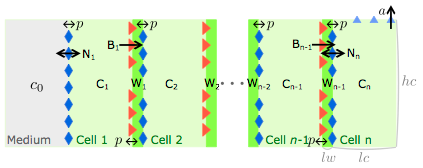This edition of the GARNet research roundup begins with a study from the John Innes Centre that investigates the role of auxin in the control of fruit development in Capsella.
Auxin is also a central focus of the next paper that is from SLCU, in which the authors characterise the role of different types of auxin transport during shoot development. The third paper, also from Cambridge, identifies a new function for members of the DUF579 enzyme family. The final paper from Cambridge reports on an outstanding citizen science project that looks at how different temperature and light conditions influence the growth of spring onions.
The next paper is from the University of Glasgow and investigates the role of the SNARE protein complex during vesicle transport in Arabidopsis.
The final two papers include authors from the University of Nottingham. Firstly Anthony Bishopp leads research that defines determinants of vascular patterning across plant species. Finally Don Grierson is a co-author on work that has identified novel signaling components involved in the response to hypoxia in Persimmon and Arabidopsis.
Dong Y, Jantzen F, Stacey N, Łangowski Ł, Moubayidin L, Šimura J, Ljung K, Østergaard L (2019) Regulatory Diversification of INDEHISCENT in the Capsella Genus Directs Variation in Fruit Morphology. Curr Biol. doi: 10.1016/j.cub.2019.01.057
Open Access
This research from Lars Ostergaard’s lab in the John Innes Centre is led by Yang Dong. The work is primarily conducted in Capsella and investigates the role of the INDEHISCENT (IND) protein in this plant, which has fruits that are morphologically distinct from those in Arabidopsis. Expression of CrIND controls fruit shape by influencing auxin biosynthesis leading to auxin accumulation in specific maxima that are localised to the fruit valves.

van Rongen M, Bennett T, Ticchiarelli F, Leyser O (2019) Connective
auxin transport contributes to strigolactone-mediated shoot branching
control independent of the transcription factor BRC1. PLoS Genet. doi: 10.1371/journal.pgen.1008023
Open Access
Martin Van Rongen is the lead author on this research performed under the supervision of Ottoline Leyser at the Sainsbury Lab, Cambridge University. They investigate the hormonal signals that underpin the remarkable plasticity of shoot patterning, focusing on a genetic analysis of connective auxin transport (CAT), which moves the hormone across the stem (in contrast to up-down polar transport). Using multiple pin mutant plants, they show CAT is important in the regulation of strigolactone-mediated shoot branching. However shoot branching controlled by the BRANCHED1 transcription factor is reliant on the ABCB19 auxin export protein and is not significantly influenced by the activity of PIN proteins. Martin van Rongen discusses this paper on the GARNet YouTube channel.
Temple, H, Mortimer, JC, Tryfona, T, et al (2019) Two members of the DUF579 family are responsible for arabinogalactan methylation in Arabidopsis. Plant Direct. https://doi.org/10.1002/pld
Open Access
Henry Temple works with Paul Dupree at the University of Cambridge and leads this study that identifies a novel activity of two DUF579 enzymes in the methylation of glucuronic acid within highly glycosylated arabinogalactan proteins (AGPs). This differs from all other previously characterized DUF579 members that have been previously shown to methylate glucuronic acid within the cell wall component xylan.

Brestovitsky, A, Ezer, D (2019) A mass participatory experiment provides a rich temporal profile of temperature response in spring onions. Plant Direct. 2019; 3: 1– 11. https://doi.org/10.1002/pld3.126
Open Access
This citizen science project led by Anna Brestovitsky and Daphne Ezer was performed in collaboration with the BBC Terrific Scientific program. In this study primary school students from across the UK recorded the growth of spring onions over a two-week period, which was then cross-referenced with detailed hourly meteorological data. This allowed the authors to discern the effect of minute temperature and light changes on plant growth and perhaps more importantly demonstrated that even the youngest researchers, when involved a well-designed citizen science project, can yield very useful data.
Zhang B, Karnik RA, Alvim JC, Donald NA, Blatt MR (2019) Dual Sites for SEC11 on the SNARE SYP121 Implicate a Binding Exchange during Secretory Traffic. Plant Physiol. doi: 10.1104/pp.18.01315
Open Access
Ben Zhang and Rucha Karnik are first authors on this paper that continues Mike Blatt‘s lab’s study of SNARE proteins, which are involved in vesicle trafficking. This study defines a new amino acid motif within SNARE SYP121 that is needed for the binding of the SEC11 protein but is not involved in binding plasma membrane K+ channels. This motif is essential for assembly of the entire SNARE complex yet does not influence the interaction of SYP121 with the uptake of K+ ions.
Mellor N, Vaughan-Hirsch J, Kümpers BMC, Help-Rinta-Rahko H, Miyashima S, Mähönen AP, Campilho A, King JR, Bishopp A (2019) A core mechanism for specifying root vascular patterning can replicate the anatomical variation seen in diverse plant species. Development. doi: 10.1242/dev.172411
Open Access
Nathan Mellor is first author on this work led by the lab of Anthony Bishopp at the University of Nottingham. The primary accomplishment of this work is in the development of a mathematical model that is able to predict the role of auxin in the specification of vascular patterning during embryonic development. This model has been tested through experimental interrogation of both transgenic Arabidopsis plants and in a range of other species with different vascular development patterns. Importantly they show that a heterologous auxin input might not be as critical in vascular development when compared to growth patterns that arise from spatial constraints. The authors show that this model has broad relevance to define early vascular patterning across plant species.

Zhu QG, Gong Z, Huang J, Grierson D, Chen KS, Yin XR (2019) High-CO2/hypoxia-responsive transcription factors DkERF24 and DkWRKY1 interact and activate DkPDC2 promoter. Plant Physiol. doi: 10.1104/pp.18.01552
Open Access
Don Greirson is a co-author on this Chinese-led study that identifies a set of transcription factors from Persimmon ((Diospyros kaki). These TFs are involved in responses to high CO2 and the authors show that their Arabidopsis orthologs play a similar role. The authors introduce a new response module that may be important during this key environmental response.









